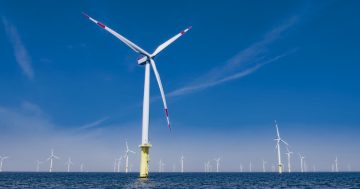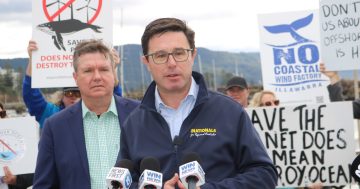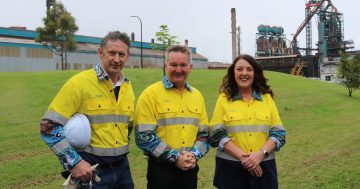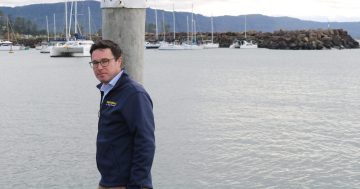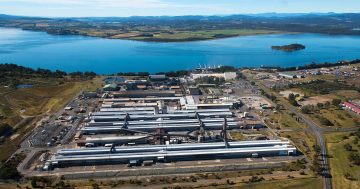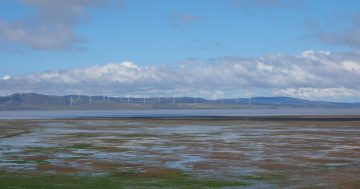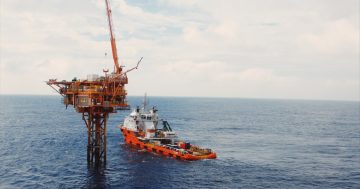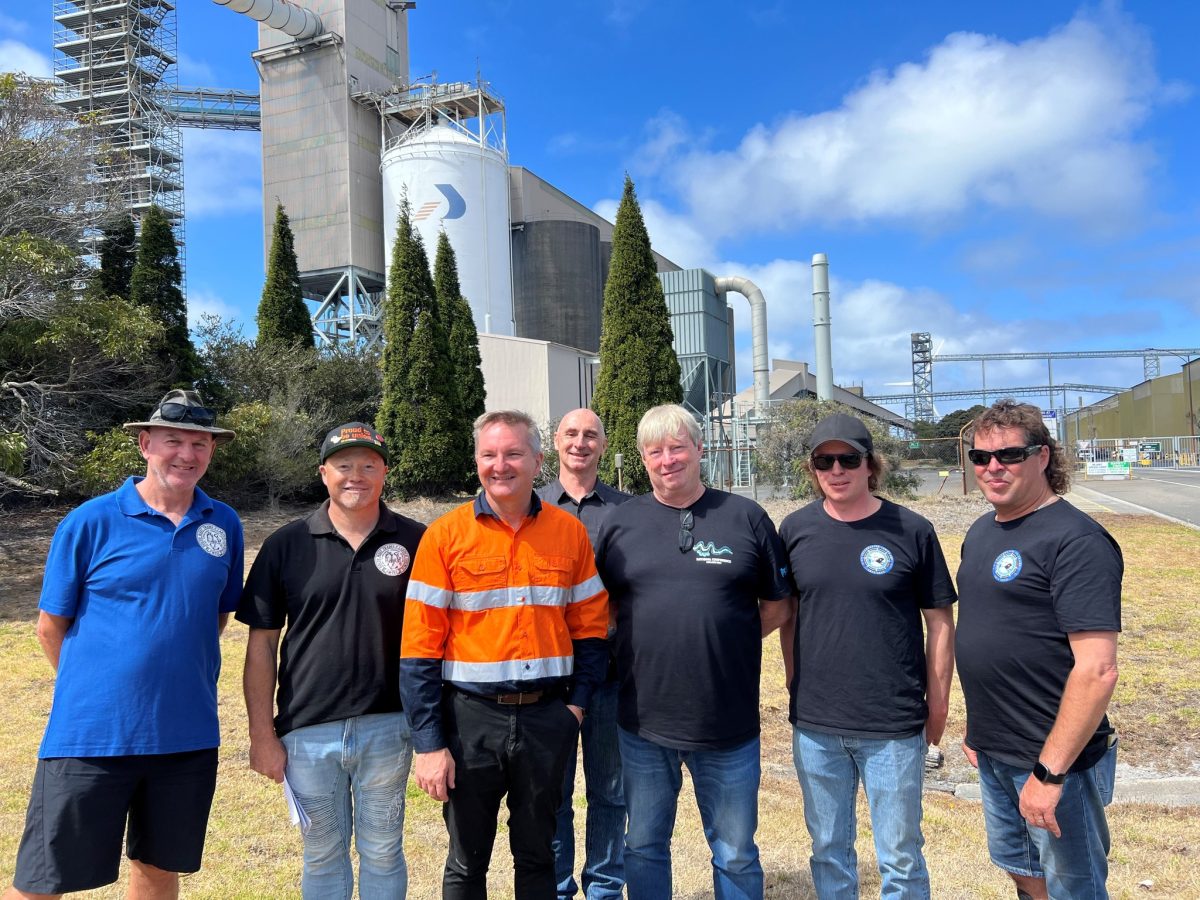
Federal Minister for Energy Chris Bowen made the announcement with MUA Victoria Branch Secretary Robert Lumsden and other members last Friday. Photo: MUA – VIC.
Off the coast of Portland, Victoria, a new zone has been declared for the development of wind farms capable of generating enough power for more than two million homes.
Initially the project (15-20 kilometres offshore) is hoped to make up to 2.9 GW of renewable energy and generate 1680 jobs throughout construction and 840 ongoing positions to keep it in operation – including roles for engineers, labourers, technicians, divers, riggers, and administrators.
While the area is a fifth of the size of the originally proposed area, at 1030 sqkm, the state’s southwest has been chosen as one of six priority areas identified for development in Commonwealth waters.
The Southern Ocean region was declared on 6 March due to a range of factors, but mostly because of its strong, consistent winds; proximity to areas of high electricity demand (e.g. Portland Aluminium Smelter), and existing connections to the grid; along with nearby ageing coal-fired power stations that are set to close over the coming years.
Western Victoria hosts the Portland Aluminium Smelter, which draws up to 10 per cent of the state’s electricity. But this development has the capability to power two-and-a-half times its total energy usage.
On top of this, significant interest from industry has been pushing the Victorian Government to prioritise the area as a renewable energy zone for the development of an offshore wind industry. In 2022 the state declared its first offshore wind zone near Gippsland, which is set to grant feasibility licences soon.
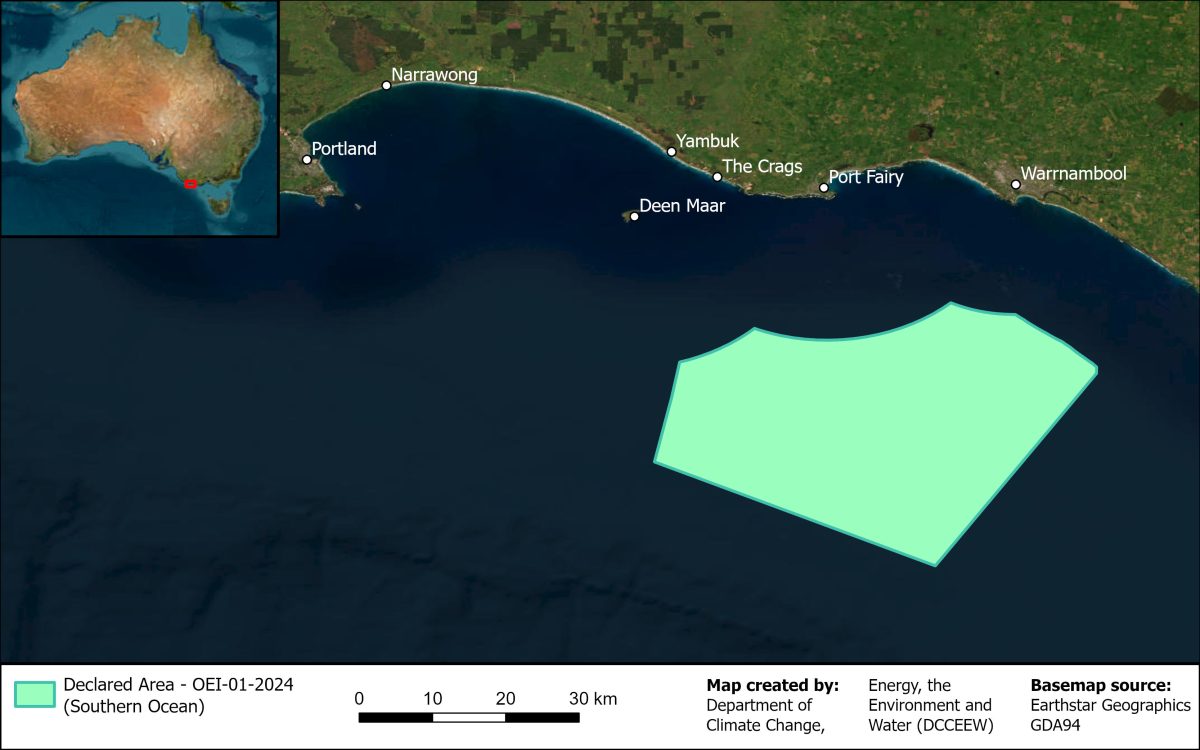
The declared offshore area between Warrnambool and Yambuk is now being assessed to inform future development options. Photo: DCCEEW.
Federal Energy Minister Chris Bowen explained the deciding factors at the announcement with representatives of the Maritime Union of Australia’s Victorian branch.
“The Southern Ocean offshore wind zone has the potential to create thousands of new, high-value jobs and help secure cleaner, cheaper more reliable energy for regional Victoria,” said Mr Bowen. “Australia has abundant renewable energy, the cheapest form of energy, and the government is committed to helping Australians benefit from these natural resources, including offshore wind.”
Following public consultation, it was decided the zone would no longer include an area off the coast of South Australia. Instead it will be working around the Bonney Upwelling, Deen Maar Island and shipping routes, while treating the region’s environmental, economic, and culturally significant features with care.
Until 2 July applications are open for feasibility licences in the Southern Ocean zone, which is when developers will undertake detailed environmental assessments and further consultation; especially with the shipping, tourism and fishing industries directly impacted by the project.
However, construction will only begin once a licence has been granted and developers have attained all the subsequent environmental and management plan approvals.
MUA Victoria Branch Secretary Robert Lumsden said the declaration kicked off a process that would deliver and sustain many thousands of long-term and rewarding jobs for Victorian maritime workers.
“The expertise and skill of MUA members has built and sustained the offshore energy sector for generations, and the new jobs on offer through offshore wind will bolster this already thriving industry of skilled seafarers, offshore workers and dockers who keep the lights on for people and businesses throughout the nation,” he said.



